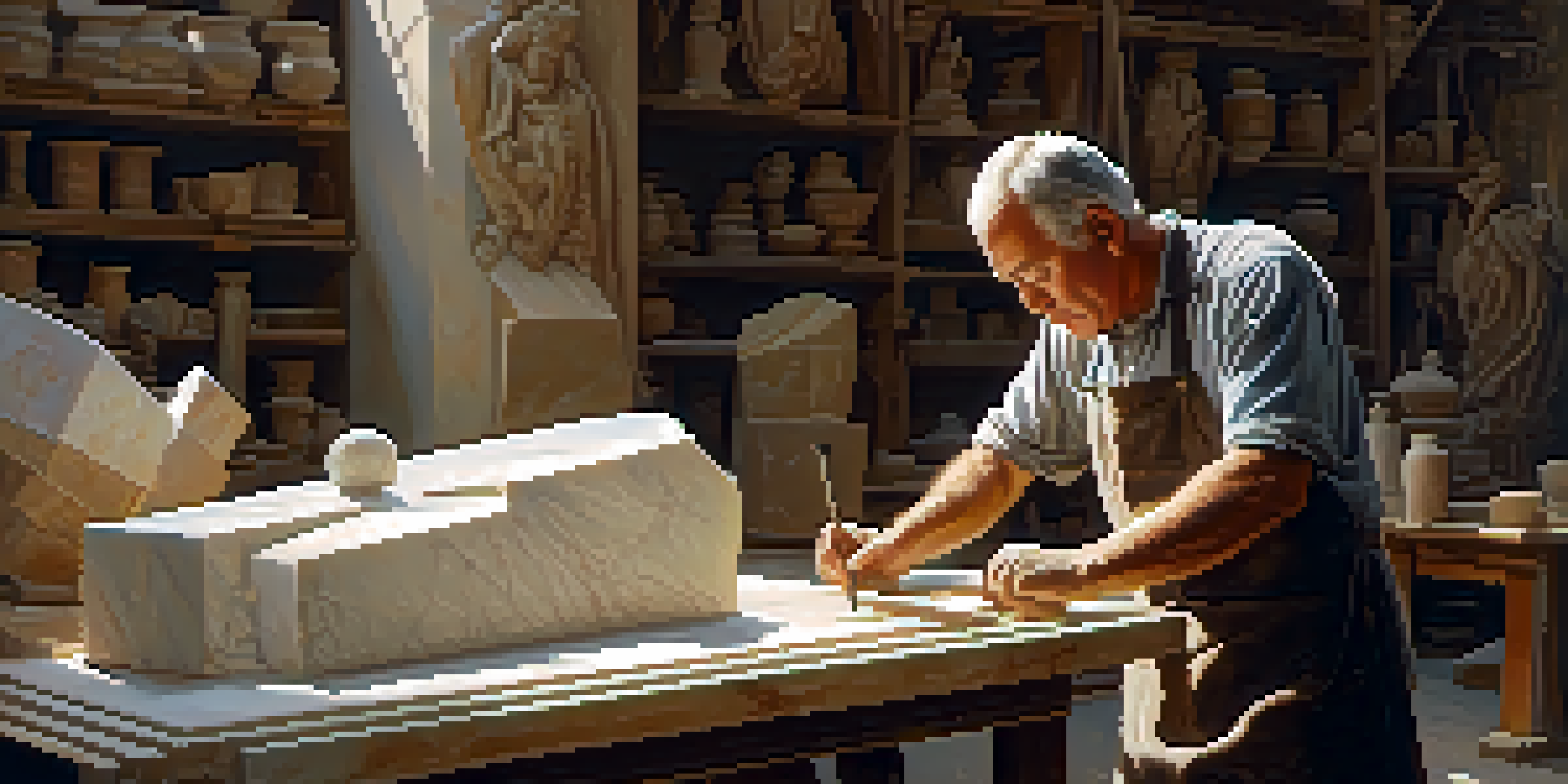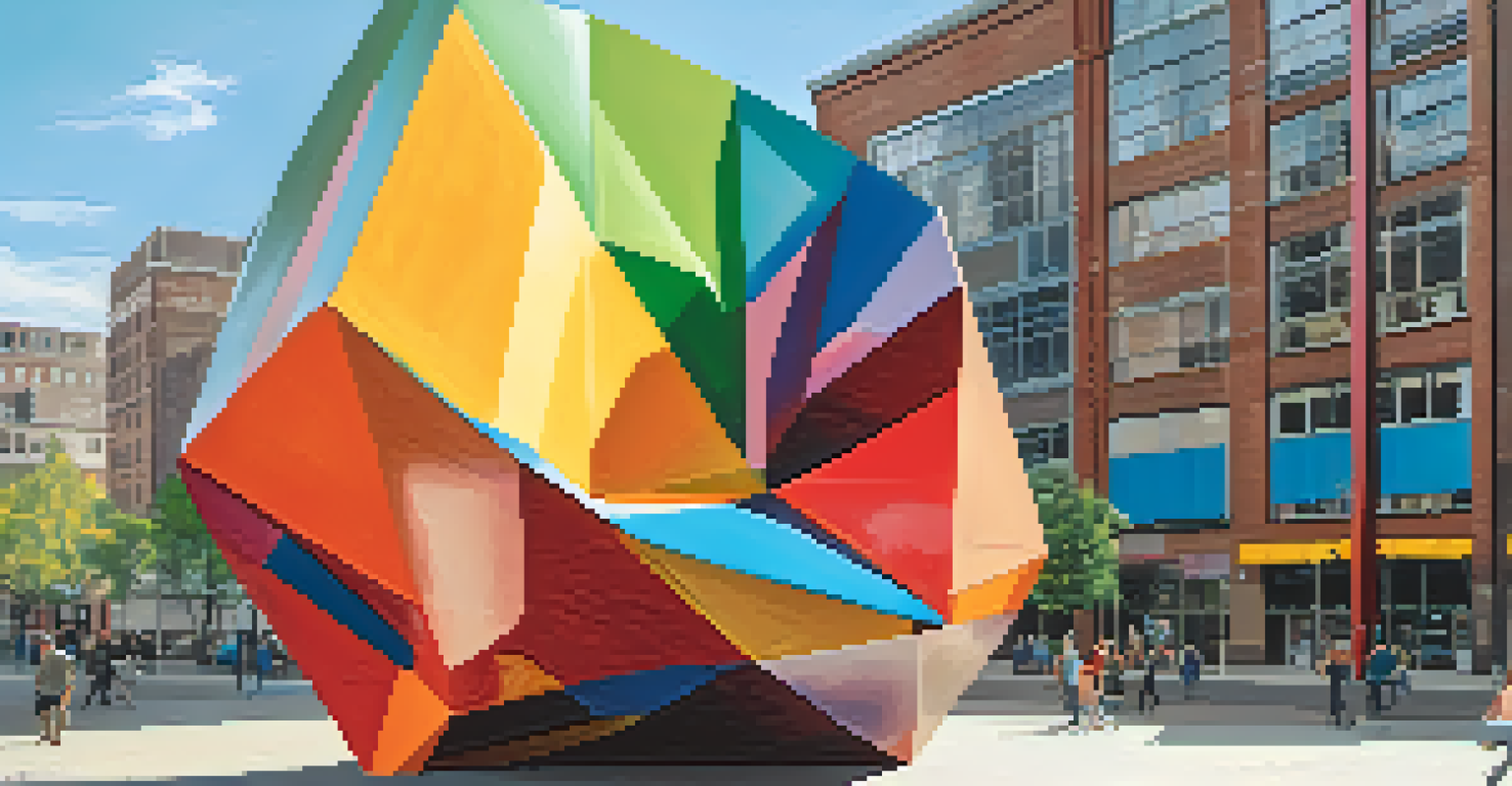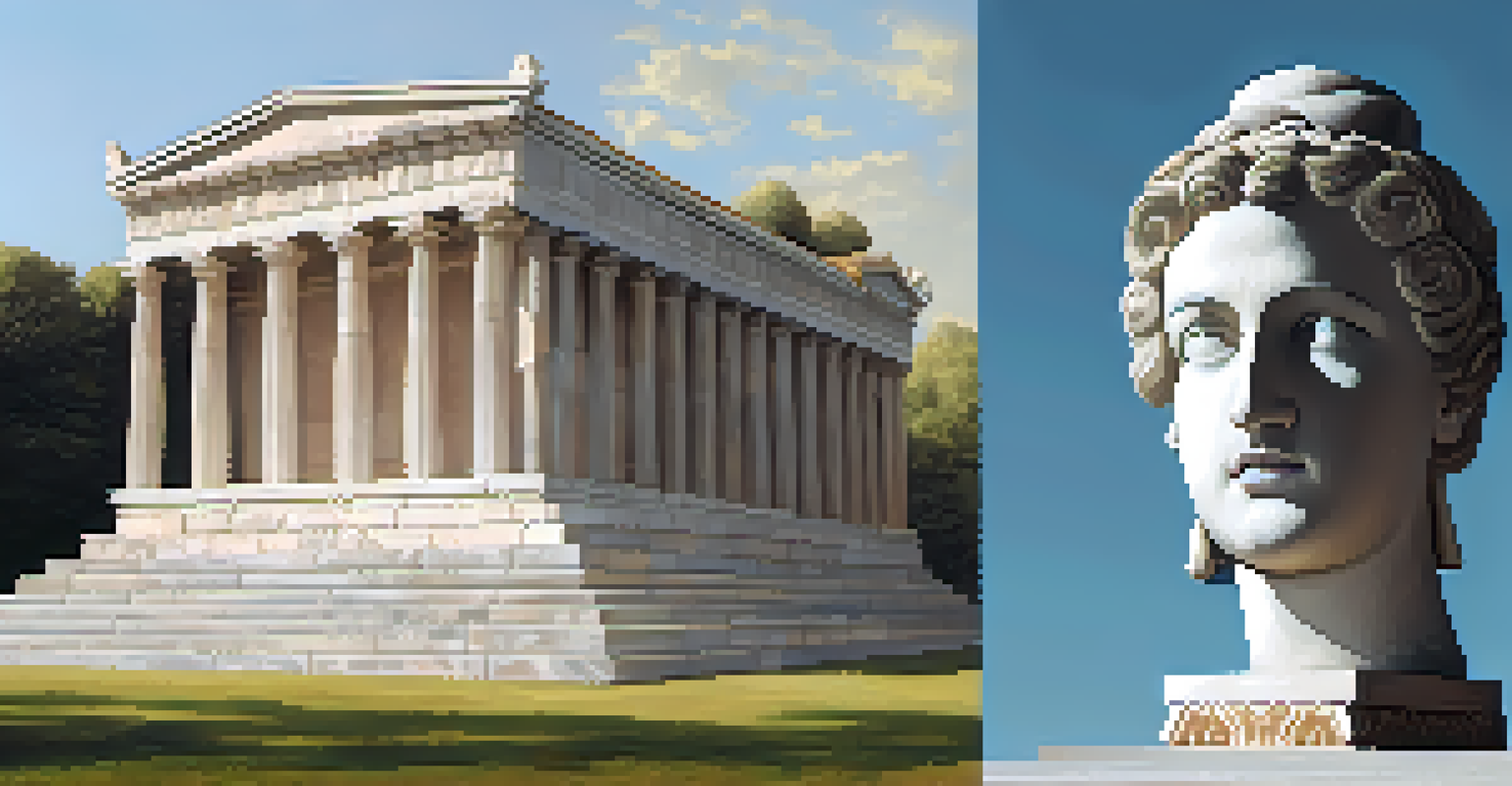Comparing Traditional and Contemporary Sculpture and Carving

Defining Traditional Sculpture: Roots and Techniques
Traditional sculpture often refers to artwork created using methods that have stood the test of time, such as carving stone or wood. This kind of sculpture emphasizes craftsmanship, with artists employing techniques passed down through generations. For example, think of the exquisite marble works of Michelangelo, where every chisel stroke is a testament to skill and patience.
Art is not what you see, but what you make others see.
These sculptures typically depict historical figures, religious themes, or natural forms, aiming to capture beauty and convey deeper meanings. The focus is on form and detail, showcasing the artist's mastery over their chosen medium. This approach often requires years of training and a profound understanding of anatomy and proportions.
In essence, traditional sculpture connects us to our past, invoking a sense of nostalgia and reverence for the artistic methods that shaped our cultural heritage. It's a world where every piece tells a story, rooted in history yet timeless in its appeal.
The Rise of Contemporary Sculpture: Innovation and Expression
Contemporary sculpture, on the other hand, embraces innovation and often challenges conventional norms. Artists today explore a variety of materials—everything from recycled objects to digital media—pushing the boundaries of what sculpture can be. For instance, consider the works of artists like Jeff Koons, who transforms everyday items into thought-provoking art pieces.

This modern approach allows for a more expressive and sometimes abstract style, where the focus is less on realistic representation and more on the idea or message behind the artwork. Contemporary sculptures often engage with social, political, or environmental themes, prompting viewers to think critically about the world around them.
Traditional vs Contemporary Sculpture
Traditional sculpture emphasizes craftsmanship and historical themes, while contemporary sculpture focuses on innovation and personal expression.
In many ways, contemporary sculpture is a reflection of our times, encouraging dialogue and interaction. It invites us to experience art in new ways, often blurring the lines between different artistic disciplines.
Materials Matter: Traditional vs Contemporary Choices
The choice of materials is one of the most striking differences between traditional and contemporary sculpture. Traditional artists typically utilize natural materials like stone, wood, and bronze, each demanding specific techniques and tools. These materials not only provide durability but also connect the artwork to nature, giving it a timeless quality.
The great thing about sculpture is that you can see it from every angle.
In contrast, contemporary sculptors are known for their adventurous use of diverse materials. From plastic and glass to unconventional items like old machinery or even light, the possibilities are virtually endless. This freedom allows contemporary artists to express their visions in unique ways, leading to innovative forms that challenge our perceptions of art.
Ultimately, the material chosen can significantly impact the meaning and experience of the sculpture. While traditional materials evoke a sense of historical continuity, contemporary choices can highlight issues of consumerism, sustainability, and the ever-changing nature of our society.
Themes and Subjects: A Shift in Focus
In traditional sculpture, themes often revolve around mythology, religion, and heroism, aiming to convey moral lessons or celebrate cultural narratives. These subjects are deeply rooted in the societies that produced them, offering insights into values and beliefs of the time. For instance, classical sculptures often depicted gods and goddesses, serving both decorative and spiritual purposes.
Conversely, contemporary sculpture frequently tackles more personal or provocative themes, exploring identity, gender, and societal issues. Artists use their work as a platform to discuss current events and personal experiences, creating art that resonates with modern audiences. This shift allows for a broader range of interpretations and emotional connections.
Material Choices Define Art
The choice of materials distinguishes traditional sculptures, which use natural elements, from contemporary works that embrace diverse and unconventional materials.
By examining the subjects of these sculptures, we can see a reflection of the evolving human experience. While traditional works aim for universal truths, contemporary pieces often invite individual interpretation, making art a more personal journey for both the artist and the viewer.
Techniques: Craftsmanship vs Conceptualization
Traditional sculpture emphasizes meticulous craftsmanship and technical skill, requiring years of practice to master. The artist's hand is evident in every detail, showcasing their dedication to the craft. Techniques such as carving, modeling, and casting are foundational, making the physical act of creating a sculpture a deeply personal and labor-intensive process.
In contemporary sculpture, however, the focus often shifts from craftsmanship to conceptualization. Artists may employ mixed media or installation techniques, where the idea behind the work takes precedence over traditional skill. This can mean collaborating with craftsmen or using technology to bring their vision to life, allowing for a more diverse range of artistic expression.
This evolution in techniques reflects broader changes in the art world, where the definition of what constitutes 'skill' is continually expanding. While traditional methods honor the artistry of the past, contemporary practices celebrate innovation and the idea that art can be created in myriad ways.
Audience Engagement: The Role of the Viewer
Traditional sculptures often invite viewers to appreciate the artistry from a distance, fostering admiration for the skill involved. These works frequently find a home in museums or public spaces, where they serve as historical artifacts, allowing viewers to connect with the past. The experience is often passive; one appreciates the beauty and craftsmanship without direct interaction.
In contrast, contemporary sculptures frequently encourage viewer participation and interaction. Artists may design pieces that invite touch, movement, or even digital engagement, breaking down the barriers between art and audience. This interactive element creates a dynamic relationship, where the viewer becomes an integral part of the artwork's narrative.
Evolving Audience Engagement
While traditional sculptures invite passive admiration, contemporary pieces often encourage active viewer participation, transforming the art experience.
By engaging the audience in this way, contemporary sculpture transforms the experience of art into a shared journey. It challenges us to reflect on our role as viewers and encourages a deeper connection to the themes being explored.
The Future of Sculpture: Blending Traditions and Innovations
As we look to the future, the lines between traditional and contemporary sculpture continue to blur. Many modern artists draw inspiration from classical techniques while incorporating new materials and concepts, creating a hybrid form of expression. This blending honors the past while paving the way for innovative approaches to art.
For instance, some sculptors are reviving ancient techniques using modern technology, such as 3D printing, to create stunning pieces that reflect both old and new. This fusion not only celebrates the rich history of sculpture but also pushes the boundaries of creativity, allowing for endless possibilities.

The evolution of sculpture is a testament to the human spirit's desire to innovate while respecting tradition. As artists experiment with various influences, we can expect to see a vibrant future where the past and present coexist, enriching the art world for generations to come.